2018: Natural Materials Trend
We began 2018 by enjoying the Maximalist trend which we are confident will take root in the hospitality sector during 2018. In stark contrast we now discuss how and why the trend for natural materials will have equal dominance this year with assistance from the HBA London, RPW Design, Evens Textiles Limited, Burgess Furniture, Goddard Littlefair, Neil Tomlinson Architects, VitrA UK and Johnson Tiles.
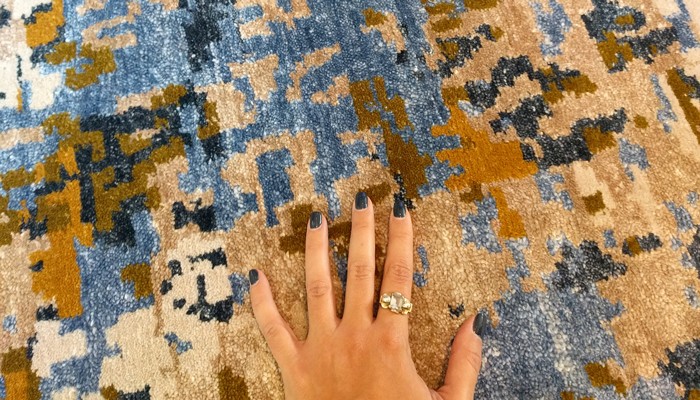
HBA London, Aranya Pavillion, Bamboo Silk Rug: The use of natural fibres in carpets. We now have the opportunity to use bamboo silk, which is similar to silk but made out of bamboo fibres, the increased durability enables them to be placed in high-traffic areas.
Natural materials are increasing specified within the contract sector due to a primal need to be connected to our origins, Alicia Meireles, Senior Designer at HBA London explains. ‘No matter how large the space, natural elements will always assist in creating an inviting environment.’ Alessandro Tessari, Interior Architect & Heather McLellan, Associate at RPW Design both re-affirm the importance of our human need to be connected with nature: ‘Nature has always been a key element for the design of the Interiors: the geometry of natural elements takes us back to a human scale: this is one of the key points of Contract Hospitality as it is essential for RPW Design to deliver a product where the guests feel at home. Natural textures add a sophisticated layer to a surface and emphasises the way they reflect and express themselves through the light. New technologies have enabled designers more scope to use natural finishes, as an example, new lacquers allow a timber finish to become more durable and suitable for commercial projects, without altering the aesthetic: this allow us to maintain a sense of honesty, while respecting these natural materials.’
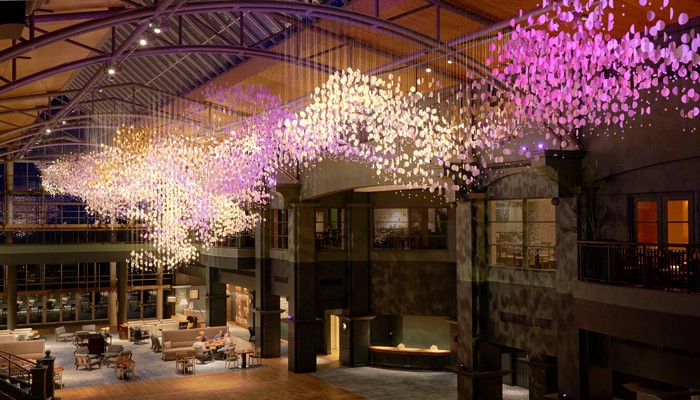
RPW Design: RPW worked with George Singer to design a 60m long sculpture that flowed through the Atrium space in the hotel. The award winning sculpture was inspired by the natural textures and movements found along the St Andrew’s coastline.
When we spoke with Adrian Barboza, Associate at Goddard Littlefair, he explained that the trend for natural materials directly links to the end-user initiated trend for authenticity, he also sees further benefits for operators and designers, ‘they are also of course durable and robust. If chosen well, they can also be environmentally ethical and sometimes surprisingly cost-effective. The senses an occupant experiences in a space are also important for us as designers, whether that’s the tactility of smooth marble stone or the way an elegant linen fabric looks, the sound of a timber floor underfoot or even the smell of luxurious natural fragrances filling a space. Natural materials both endure and are naturally seductive.’
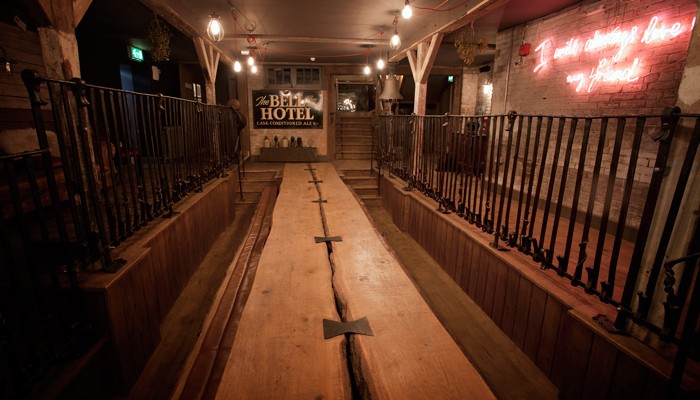
Neil Tomlinson Architects: Working with Richard Brett of ‘We Like Today’ on The Bell in Tilehurst, Neil Tomlinson Architects created this timber feature from two continuous pieces of wood. It can act as a dining table or be used as a catwalk or stage for events.
Neil Tomlinson, Founder Neil Tomlinson Architects agrees with Adrian ‘aesthetically, they evoke a relaxed, close-to-nature feel and, in a way, allow designers to cheat, by using nature as a designer, via marble veining, for example, or the figuring of natural timber. Also, they add depth. As part of a spare materials palette where the other materials have no such ‘face’, natural materials enliven the whole composition.’
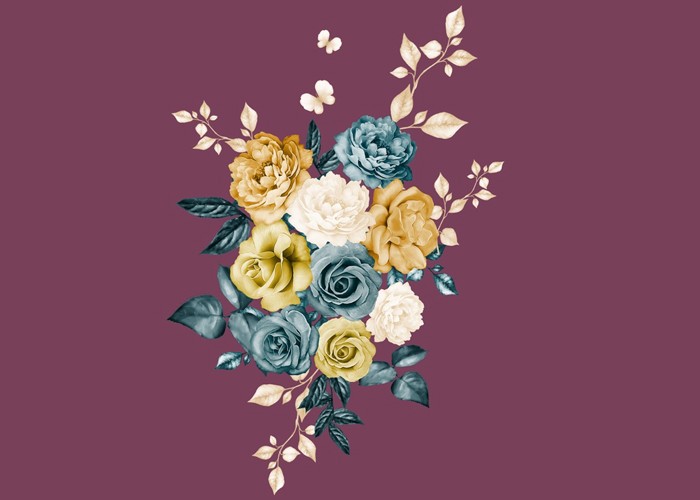
Evens Textiles Limited: Bespoke design & contract print service for chair backs in a dementia care home in which colour & image psychology is particularly important. The cleanliness & sharpness of the design won’t cause confusion in residents, whilst the design reflects natural elements and the colours are up-lifting.
Bethany Callan, Lead Designer at Evans Textiles Limited, has experience of bespoke projects which demand psychologically friendly & comfortable spaces which are ‘vital to the contract market, therefore we are seeing an increase in structures, materials & designs that reinforce natural patterns.’ This is an opinion shared by Ashley Taylor, General Manager at Burgess Furniture, and which is reflected in the material selection for Burgess’ Junea design: ‘Elements of botanicals, Scandinavian chic and UK craft are all encompassed in the trend for natural materials, to which the design industry has responded by creating products to encourage a relaxing ambience and increased wellbeing in the home, office and throughout the hospitality industry.’
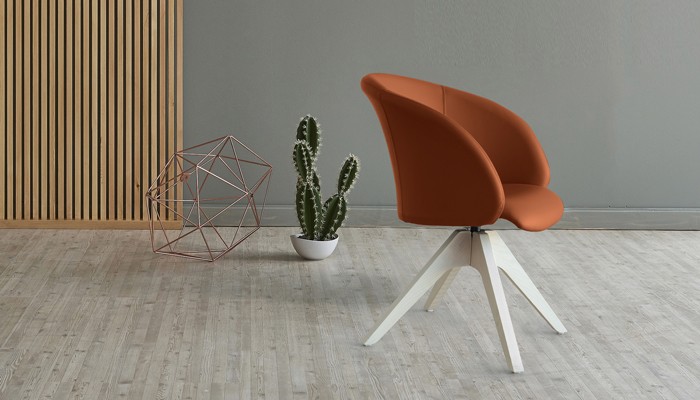
Burgess Furniture: The Junea Range offers a wooden base to seamlessly suit interior schemes that embrace a ‘natural’ palette.
Margaret Talbot, Marketing Manager at VitrA UK, sees how natural materials and textures are helping to create a holistic and calming environment, reflecting the wellbeing trend prominent in the contract sector, and explains how this has been incorporated in to the design of sanitaryware: ‘Bringing natural elements into the indoor space and integrating them into the design scheme, provides a fresh look to the room. The use of different textures adds a similar touch by softening the lines and warming up the overall atmosphere. Colours have long been utilised across various facets of an interior, whether that be a hotel or an office space, yet the default palette for sanitaryware is nearly always white ceramic.’
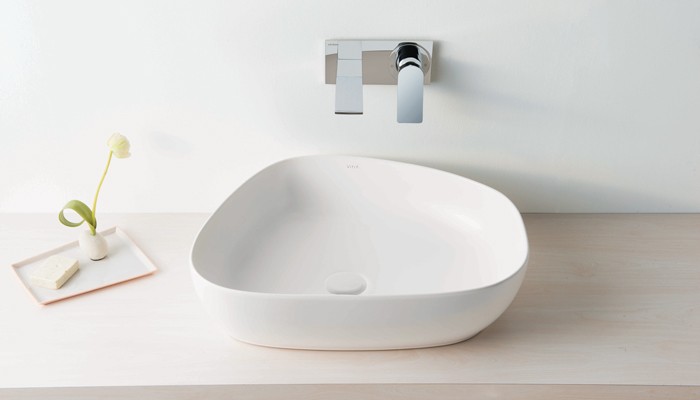
VitrA: Outline Basins are ultra-fine wash basins manufactured using Cerafine, a brand-new material in bathroom production that allows for slim, elegant shapes with very defined edges. Shapes and edges like this are not possible using more traditional materials as the shape would not survive the firing process.
Johnson Tiles, Creative Director, Darren Clanford adds a further environmental element into our discussion: ‘In the contract sector, we’re continuing to see a trend for interior products inspired by nature, from calming colour palettes, to the replication of wood, stone and slate. The accountability for its popularity is two-fold – firstly, designers are dedicated to improving the spaces in which we live and work to ensure improved wellbeing. And secondly, it’s a direct response to protecting the world around us. Thanks to the available technology in the tile manufacturing industry, seamless solutions now offer alternatives to natural resources.‘
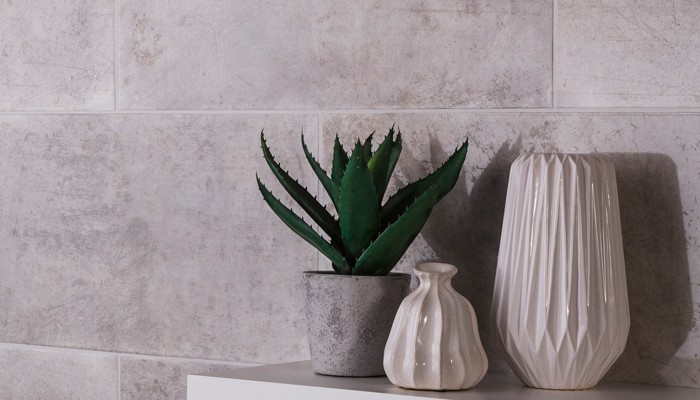
Johnson Tiles, Fitzrovia: In response to the nature-inspired trend, Johnson Tiles launched seven ranges, which offer cutting-edge style and subtle tones, for truly stunning results. A neutral floor tile could be paired with a colourful or patterned wall tile. Similarly, designers can stick to a subtle palette throughout, injecting personality through bold texture and shape.
Natural materials is a trend born out of a desire to improve wellbeing, achieved through creating spaces which link to our origins. Natural materials provide depth of detail, offer environmental benefits and we have also heard how new technology is making natural materials increasing accessible to the contract sector. This trend is clearly being welcomed by the contract community, don’t be shy, tell us about how you will be embracing nature during 2018!




